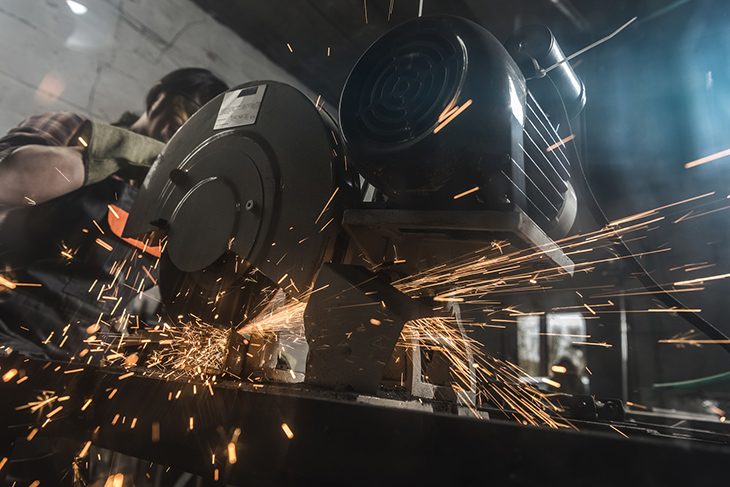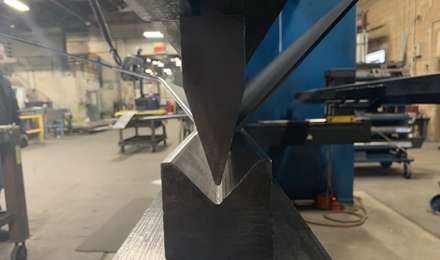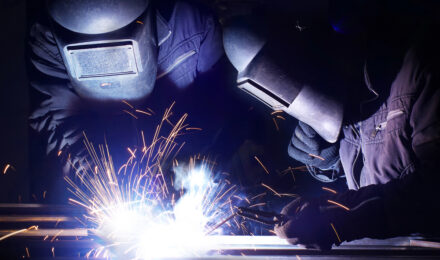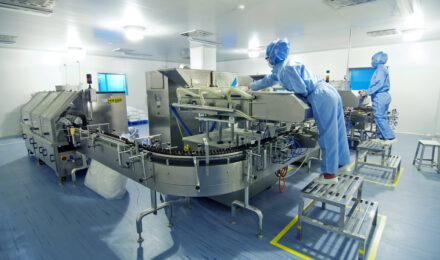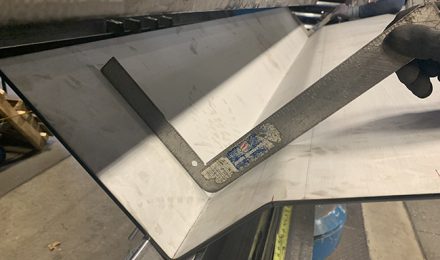Open communication and proper training go a long way to ensuring a successful technology implementation.
Your shop has run the numbers and realized that the only way to get more done now and stay competitive as innovation continues is to strategically automate your welding or fabrication process. However, this key upgrade might not be as simple as it seems.
When I visit our small, medium, and large customers who are looking to automate to help them compare systems and select one that will work for their needs, I emphasize one frequently overlooked factor in deciding when to automate—the human aspect. For a company to truly benefit from the gains in efficiency that accompany a transition to automated operations, the team should be fully informed about their role in the process.
This decision to automate may be met with some hesitation from those who are afraid that automation will render their jobs obsolete. The truth, however, is that automation requires the irreplaceable welding expertise of skilled workers. Automation also creates new, more sustainable jobs that present growth opportunities for many skilled welders who are ready to grow within their professions.
Successful integration of automated processes requires a shift in how we understand automation. For example, robots are not just new tools, they’re new ways of working. For automation to have worthwhile benefits, the entire shop must adapt to support the changes associated with adding a robot to the existing work flow.
Before you make the leap into automation, here are some steps you can take to find the right people for the job ahead and get your team ready to manage and adapt to the change in process.
Step 1: Prepare the Workplace for a Culture of Efficiency
Keeping everyone informed about the changes that will accompany a shift to automation is critical.
Your workforce should know that there are likely to be changes and growing pains that accompany a shift to automation, but the benefits associated with these changes will boost efficiency and keep the company profitable.
If you’re considering automation, you must also consider how this shift in the way of working will affect existing shop floor employees. The most important thing to emphasize to wary employees is that automated welding processes still require human labor. In fact, the best-case scenario for the success of automated welding is a driver who can own the process, bring a nuanced understanding of welding, and have the confidence and competence to operate cutting-edge digital technology.
If your vision of an automated process includes faster production speed and lower costs from day one, you need to fully understand all of your cost drivers first. Most customers focus only on speed, rather than weld quality and safety, which we find are often larger drivers of hidden costs that will affect your return on investment calculations.
When it comes to weld quality, you’ll want to check that your process achieves the proper size weld and required penetration and has the correct shape. There also should be no weld spatter, no undercut, no distortion, and no burn-through.
From a safety perspective, you’ll need to account for fume extraction. Also check that your safety procedures are updated to prevent injuries related to heat and arc flash. A review of ergonomic risks associated with material handling and other production activities should be done as well.
Automation often can ensure consistent weld quality and eliminate certain safety hazards because workers simply aren’t involved in the process. With the focus on weld quality and safety, you can be assured that the production speed will pick up.
As technological innovations continue to improve our processes, it’s important to adapt how you work in order to stay competitive on a global scale. Additionally, it’s important to update the way you identify talent among your workforce.
Step 2: Identify Someone Who Can Balance Both Welding and Digital Technology
Look around the shop floor. Do you see anyone with a new cellphone or hear someone talking about playing video games with their friends? Is someone raving about the new navigation system or technology features in their truck? Even if the people involved in these conversations have never worked a robot, they could be the best choice to be in charge of operating an automated welding system.
To find the strongest employees on your team who can excel as your in-house automation experts, be on the lookout for those who have a good mix of these characteristics, skills, and traits:
Understands welding mechanics. A majority of the questions or concerns a company has about production quality usually stem from welding issues. Having an expert welder on-site helps the process move more smoothly.
Open to learning how to use new technology. A potential owner of the operation having the willingness to learn is a marker for further flexibility as innovation continues.
Proficient computer user. Existing computer skills are a strong foundation for training to operate a robot.
Adaptive to new processes and ways of working. Have you noticed someone who has been eager to adopt new processes both on and off the job? This quality lends itself to success as an operator of an automated welding cell.
Eager and excited to take ownership of a piece of equipment. A robot is an exciting new tool with plenty of features to learn and master. The science involved will come naturally to some, but it’s more important for the person heavily involved with the robotic cell to be flexible, adaptive, and coachable.
Strong leader who can manage the change. An individual heading up the operation will benefit from learning quickly and having the ability to identify potential long-term problems and solutions.
Supportive of other workers throughout the transition. Part of a leader’s role is supporting his or her co-workers through the transition to automation.
Bold enough to seek out the hardest tasks and rise to the challenges associated with new technology. The owner of the automated welding process ought to be confident enough to work through the necessary trial and error that will be needed as your company works out the kinks inherent in any new technology implementation.
If you do not have a member of your team who is prepared to be the “driver” on this type of automation project, you might consider hiring someone or delaying your transition to automation while you train existing employees in the skills and programs necessary for project success.
Step 3: Facilitate Training for Those Working Directly With the Robotic Welding Cell
Although the transition to automation can be a tremendous opportunity for welders looking to grow their skills, many welders on the floor are not ready to run a welding robot, either because they have not been trained for this new process or the extra training they have received at a tech school was inadequate.
We typically see an engineer, supervisor, or middle manager take ownership of the process, but it’s important that highly skilled welders are on board, as they are crucial to successfully navigating and adapting to a changing process. Unfortunately, welders aren’t given enough time or financial incentive to take on more work or additional training outside of their regular responsibilities.
The transition to automation may be a slow one that requires certain early adopters (those competent enough to be trained as drivers of the project) to lead the charge. They also are helpful in championing the automation push with their peers, which might entice others to show interest in automation as an option for career growth.
Deciding what projects you want to start out with also is key to setting your team up for a smooth warmup. Many customers have noted that they wished they had taken on smaller, simpler jobs as their first automation project to help flatten the learning curve. Consider looking at a subassembly as the first automation target instead of more complicated assemblies as your team begins automating.
In addition, training from the American Welding Society and the OEMs of specific robots is integral to a successful ramp-up with automation. In-depth training with an OEM is critically important for the leader of the automated welding cell implementation. With this background, the project driver can navigate and overcome equipment-specific issues that could otherwise hinder a smooth transition. The driver then can share the knowledge gleaned from training with the entire team so that everyone has a richer understanding of the robotic technology.
A good distributor partner that has experience with various automation cell configurations can lend vital support throughout this transition. A distributor with a strong service team can support you through the on-boarding process and provide maintenance support over the automation’s life cycle.
Original Source: www.thefabricator.com

